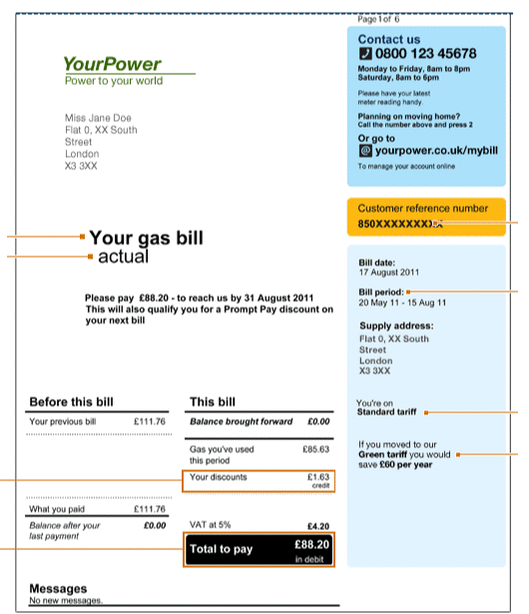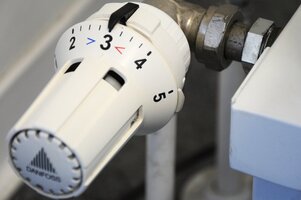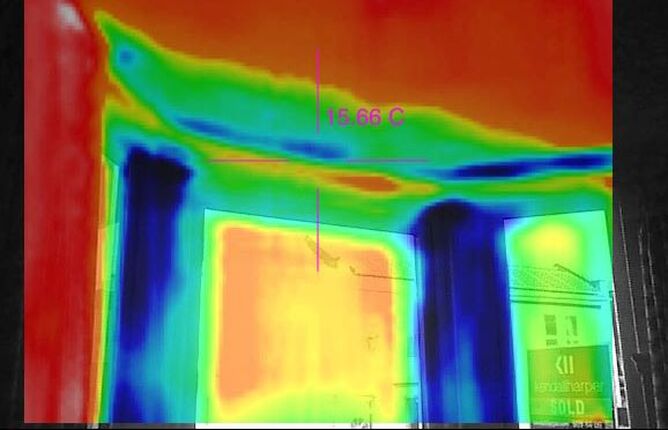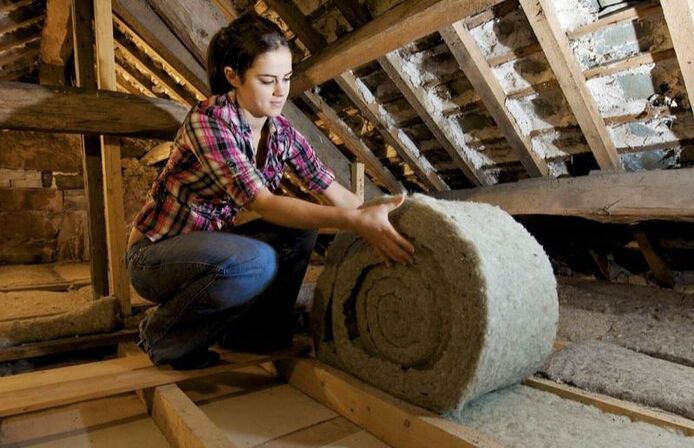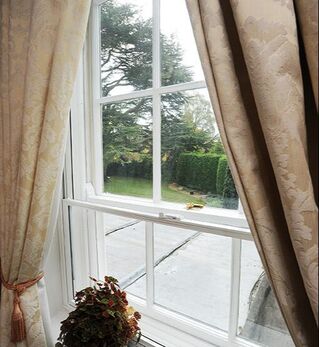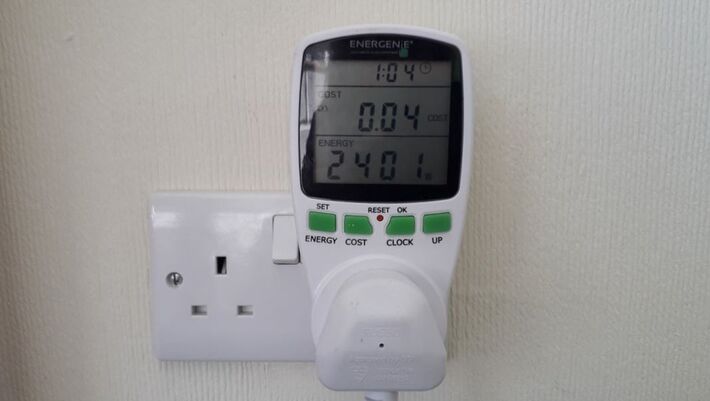The second biggest use of fuel will be electricity consumption.
The goods we use in our homes will also be high in ‘embedded carbon’, ie fossil fuel energy used in their manufacture and transport. Please see our Circular Economy page for suggestions on how to minimise this section of your carbon footprint.
Please note that in the sections below, we mention various companies providing 'green' goods and services but no recommendation is implied unless clearly stated, and similar services and goods may be available, including locally.
The goods we use in our homes will also be high in ‘embedded carbon’, ie fossil fuel energy used in their manufacture and transport. Please see our Circular Economy page for suggestions on how to minimise this section of your carbon footprint.
Please note that in the sections below, we mention various companies providing 'green' goods and services but no recommendation is implied unless clearly stated, and similar services and goods may be available, including locally.
- Understanding What You Consume
- Controlling Your Heating
- Making Sure Your Central Heating Runs at Maximum Efficiency
- Insulation
- Insulating Your Home
- Planning Your Work
- Finding a Workman or Company to Help You
- Retrofitting a Period Home
- What If I Rent My Home?
- Alternatives to Gas Central Heating
- Wood Burning
- Hot Water
- Solar Thermal
- What If My Heating is Electric?
- Measuring Your Electricity Use
- LED Lighting
- Solar Panels and Batteries
- Does It Matter When I Consume?
- Changing Your Energy Supplier
- What About Green Gas?
|
1. Understanding What You Consume
Cutting waste and excess consumption is the most important first step. We need to change our relationship with the energy we use, value it, and appreciate that our current culture of not understanding, or even knowing, what we are consuming is fundamental to the climate crisis we face today. Get out your bills and talk to the people you live with, whatever age. Take the 10% challenge. Most of us pay our fuel bills quarterly on direct debit and don’t actually look at the amounts we are consuming. Get out your last one or two years’ bills and note down the amounts you have consumed, and note the seasonal change. Start taking regular gas and electricity readings, at least monthly but preferably weekly. Talk to your energy provider and arrange to send in end-of-month figures and pay only for what you have consumed. (If you find it difficult to talk to them, time to change…) |
One degree down on your thermostat will save approximately 8% off your bill.
Use the suggestions below to cut 10% off your fuel use compared to the same season a year ago. Then aim for another 10% and so on.
Use the suggestions below to cut 10% off your fuel use compared to the same season a year ago. Then aim for another 10% and so on.
2. Controlling Your Heating
Are you heating rooms that you do not use, or at times when you are not there? A third of our heating is wasted in this way, also through draughts and poor insulation.
Do all of your household understand that there are four different controls on a central heating system? These are:
Do all of your household understand that there are four different controls on a central heating system? These are:
- the timer
- the temperature setting
- the room / house thermostat
- the radiator valves.
You should be adjusting these according to the season, the clocks going forward and back, and your usage. If you are not sure how to do this, you can contact the Centre for Sustainable Energy for telephone support on this and all cold home issues. If necessary, they will make a home visit when lockdown permits. Here’s a good video to help you understand your timer. To understand how to set your house thermostat, here’s another good video and a useful factsheet.
3. Making Sure Your Central Heating Runs at Maximum Efficiency
Make sure your radiators are flushed out every 3 – 4 years so that they are working at maximum efficiency. People upgrade their boilers but rarely take care of their radiators.
There are simple products you can buy and add to your heating system to make it run more efficiently. Endotherm is one, but you may find others on the market. These products come with no personal recommendation.
Many people report that Smart Thermostats have helped them cut their heating bills dramatically. With a smart phone, heating can be turned up or down, at appropriate times, while out of the house. For example, a smart phone gives you the ability to turn heating on just before you come home or turn it down if you find you are unexpectedly out. Here and here are two companies offering these thermostats but please look online for more, and for reviews.
There are simple products you can buy and add to your heating system to make it run more efficiently. Endotherm is one, but you may find others on the market. These products come with no personal recommendation.
Many people report that Smart Thermostats have helped them cut their heating bills dramatically. With a smart phone, heating can be turned up or down, at appropriate times, while out of the house. For example, a smart phone gives you the ability to turn heating on just before you come home or turn it down if you find you are unexpectedly out. Here and here are two companies offering these thermostats but please look online for more, and for reviews.
|
4. Insulation
The best form of insulation is clothing! Our fashion industry doesn’t help by promoting summer jumpers for winter use – keep a few thick jumpers to wear at home when relaxing (men’s jumpers are usually best), and keep a duvet by your sofa for real comfort in winter. A hot water bottle on a lap while working or watching TV can be more comfortable and a cheaper option than heating a whole room. Research has found that cold feet, even in a warm room, will make us feel cold. As warm air rises, we often don’t realise that our feet are in a different temperature zone! Have some thermal socks at the ready, and put rugs down on bare floors over winter. |

Image by congerdesign from Pixabay
|
5. Insulating Your Home
In Bristol we have the fantastic CHEESE project (Cold Homes and Energy Efficient Survey Experts) to help you identify precisely where your home is losing heat. With thermal imaging inside the house, surveyors can identify cheap-to-fix draughts and poorly performing insulation. There is usually a small cost for this survey, dependent on size of home, but feedback indicates that CHEESE helps most users either cut their bills or feel confident about the insulation choices they’ve made.
In Bristol we have the fantastic CHEESE project (Cold Homes and Energy Efficient Survey Experts) to help you identify precisely where your home is losing heat. With thermal imaging inside the house, surveyors can identify cheap-to-fix draughts and poorly performing insulation. There is usually a small cost for this survey, dependent on size of home, but feedback indicates that CHEESE helps most users either cut their bills or feel confident about the insulation choices they’ve made.
Bristol Green Doors is an annual program of educational events organised by the Centre For Sustainable Energy, in which people across the city who have retrofitted their houses show their homes so that others see what they've done. The aim of this is to inspire and support more people to retrofit and refurbish their homes in a green way, and to normalise the idea of retrofitting for sustainability within our communities. It's a great source of information on insulation and other issues.
6. Planning Your Work
FutureProof is a Bristol-based online advice resource to help you plan your work and/or get training on how to insulate.
Here’s a useful factsheet from the Centre for Sustainable Energy on easy draught-exclusion measures; and here are others on loft insulation and cavity wall insulation. The Energy Savings Trust is another good source of information.
When considering insulation materials, try and use ‘green’ supplies. There are plenty of effective, low carbon alternatives available. Here and here are some useful guides and more can be found on-line. The Ecological Building Systems company provides insulation from upcycled jute bags and many other products.
Here’s a useful factsheet from the Centre for Sustainable Energy on easy draught-exclusion measures; and here are others on loft insulation and cavity wall insulation. The Energy Savings Trust is another good source of information.
When considering insulation materials, try and use ‘green’ supplies. There are plenty of effective, low carbon alternatives available. Here and here are some useful guides and more can be found on-line. The Ecological Building Systems company provides insulation from upcycled jute bags and many other products.
7. Finding a Workman or Company to Help You
Bristol has a Green Register of companies that have been trained to understand the real potential of insulation, how to use sustainable materials, and ensure that your home stays ‘healthy’. The Green Register offers free training courses for anyone in the business who would like to learn more.
8. Retrofitting a Period Home
It seems that many conventional architects are not able to give good advice on ‘deep retrofitting’ of a period home. The Green Register runs courses specifically on this and they are likely to be your first port-of-call for a list of trained architects, builders and workmen.
|
"Three years ago, I had Ventrolla refurbish and draught-proof all four sash windows in my flat, which is in a listed Georgian building. It cost about £400 per window. The draught-proofing is very effective and consists of a strip of brush attached to the edges of each sash that closes the gap with the frame but still allows the windows to easily open and close. But perhaps the biggest benefit was that the refurb made it possible to fully open windows that had been jammed shut for years, meaning that as climate change is heating up our summers, I can properly ventilate the flat and stay comfortable. I'm very pleased I got this work done and would highly recommend it." - J. M., CCA volunteer.
|
Ecological Building Services is one company offering innovative solutions for period homes.
Rattling sash windows are a major source of draughts, driving many to turn up the heating. Timber Windows in Clifton may be one source of help, and Mitchell and Dickinson are highly recommended (but expensive) specialists in secondary glazing for period homes. This Real Homes website gives some useful, general advice, as does this Countrylife article.
Rattling sash windows are a major source of draughts, driving many to turn up the heating. Timber Windows in Clifton may be one source of help, and Mitchell and Dickinson are highly recommended (but expensive) specialists in secondary glazing for period homes. This Real Homes website gives some useful, general advice, as does this Countrylife article.
9. What If I Rent My Home?
The government has recently brought out Domestic Minimum Energy Efficiency Standards (DMEES) which mean that all rental properties must now have an Energy Performance Certificate of at least band E. This is not great, but the idea is that the standard is ratcheted up over coming years.
If you don’t know the EPC rating of your rented home, or if you know it is band F or G, you can now approach your landlord to ask them to rectify the situation, although various exemptions exist for landlords (see government guidelines). If you need help to approach your landlord, you can call the Centre for Sustainable Energy for support.
If you don’t know the EPC rating of your rented home, or if you know it is band F or G, you can now approach your landlord to ask them to rectify the situation, although various exemptions exist for landlords (see government guidelines). If you need help to approach your landlord, you can call the Centre for Sustainable Energy for support.
10. Alternatives to Gas Central Heating
Bristol has plans for widespread district heat networks where 'waste heat' from Avonmouth and similar is pumped around the city in a network of pipes to bring heat into individual homes.
However, this will take some time to implement and so you may want to consider other alternatives such as air source and ground source heat pumps. The Centre for Sustainable Energy has some basic information and the Centre for Alternative Technology in Wales also has information and runs courses. Register for Bristol Green Doors and you will have the chance to talk to owners who have already installed.
You will find more information if you look at company websites such as Kensa Heat Pumps, SolarSense, G-tech, Heat Pump Source, Invictus Mechanical - all but the first are Bristol based.
The main advice seems to be to make sure your home is well-insulated to maximise the benefits; do whole-cost accounting when comparing to gas (don't forget the maintenance and breakdown costs associated with gas boilers); and take advantage of the extended Renewable Heat Incentive which will cover most of your costs.
Bristol has plans for widespread district heat networks where 'waste heat' from Avonmouth and similar is pumped around the city in a network of pipes to bring heat into individual homes.
However, this will take some time to implement and so you may want to consider other alternatives such as air source and ground source heat pumps. The Centre for Sustainable Energy has some basic information and the Centre for Alternative Technology in Wales also has information and runs courses. Register for Bristol Green Doors and you will have the chance to talk to owners who have already installed.
You will find more information if you look at company websites such as Kensa Heat Pumps, SolarSense, G-tech, Heat Pump Source, Invictus Mechanical - all but the first are Bristol based.
The main advice seems to be to make sure your home is well-insulated to maximise the benefits; do whole-cost accounting when comparing to gas (don't forget the maintenance and breakdown costs associated with gas boilers); and take advantage of the extended Renewable Heat Incentive which will cover most of your costs.
|
11. Wood Burning
Many of us have turned to wood-burning heating systems, believing they were a lower global warming alternative to gas. This may be so since we're comparing it to natural gas ie very powerful methane. Everything will depend on your burning system and where the wood is sourced from, and whether it’s being replaced at a carbon-neutral rate. But in general it’s clear that wood burning is adding to the city’s air pollution and it is possible that wood burning will become illegal within the next few years. If you do not already have a wood burner our advice would be to not install one. If you already have one installed the main advice is of course to be careful of your use of wood, insist that it is completely dried, and that it burns very efficiently. Eco-friendlier fire lighters are available here, and this local company, Well Seasoned Wood sells kiln-dried, local wood and natural firelighters. |
12. Hot Water
Hot water from your boiler will be used mainly in your bathroom and in your kitchen sink. Switching from baths to showers, and keeping those showers as short as possible, will help you stop sending valuable fossil-fuel heat straight down the plug-hole!
13. Solar Thermal
Solar thermal units produce hot water rather than electricity and many people find these systems allow them to stop using gas for the majority of the year. You will need a water tank in your home to make this work. Here and here are some useful links, but please do hunt around the web. The Renewable Heat Incentive has just been extended and you can expect to receive payments, typically £200 - £500, for seven years after installation. The Energy Savings Trust has a useful checklist and SolarSense and 1WorldSolar are two local companies that install thermal units.
14. What If My Heating is Electric?
Many people live in flats where there is no gas supply and therefore electricity provides all their needs. This is usually more expensive than gas heating if you want a heated background, the same as a central heating system on a day-to-day basis, but it’s important to count in the installation and maintenance costs of a gas system to fully compare costs.
Many flats are well insulated by those living around them and, depending on your lifestyle, you may find efficient, moveable panel heaters that you turn on as necessary work well for you.
An alternative is Economy 7, storing night time electricity to produce heat during the day. These have improved in efficiency over the years and there are many attractive night time 100% renewable tariffs available to make this a really green option. Dimplex is one company providing modern night storage with smart meter controls (OVO has a special deal), but check the web for others. If you have solar panels, you can use the power to top up storage heaters during the day.
Many flats are well insulated by those living around them and, depending on your lifestyle, you may find efficient, moveable panel heaters that you turn on as necessary work well for you.
An alternative is Economy 7, storing night time electricity to produce heat during the day. These have improved in efficiency over the years and there are many attractive night time 100% renewable tariffs available to make this a really green option. Dimplex is one company providing modern night storage with smart meter controls (OVO has a special deal), but check the web for others. If you have solar panels, you can use the power to top up storage heaters during the day.
15. Measuring Your Electricity Use
To understand your electricity usage you can buy (or borrow) an appliance monitor. Energenie has ones with very clear displays
Alternatively, you can use a house monitor so that you are aware of what the whole house is using at any one time. You can test individual appliances by turning them on and off and seeing their impact on the whole-house monitor.
There are also many online guides to the consumption of typical appliances – here’s just one. The important things to remember is that appliances that are on constantly (your fridge and freezer, for example) will consume most; and that most appliances (TVs, radios etc) continue to consume if you don’t switch them off at the wall. (Here’s a gadget to help you turn things off with ease, and here’s one that allows you control when you are away from home.
Installing LEDs, turning stuff off and only boiling the water you need are first, easy steps. Don’t wash clothes that aren’t dirty and wash at low temperatures, re-use cups to avoid filling up the dishwasher, and dry clothes outside are all good options to cut your consumption. Cut your time in the shower if it’s an electric one and use a low-flow shower head.
There are also many online guides to the consumption of typical appliances – here’s just one. The important things to remember is that appliances that are on constantly (your fridge and freezer, for example) will consume most; and that most appliances (TVs, radios etc) continue to consume if you don’t switch them off at the wall. (Here’s a gadget to help you turn things off with ease, and here’s one that allows you control when you are away from home.
Installing LEDs, turning stuff off and only boiling the water you need are first, easy steps. Don’t wash clothes that aren’t dirty and wash at low temperatures, re-use cups to avoid filling up the dishwasher, and dry clothes outside are all good options to cut your consumption. Cut your time in the shower if it’s an electric one and use a low-flow shower head.
16. LED Lighting
One of the simplest things you can do to improve the efficiency of your home is to change all of your lighting over to LEDs. Each LED will consume several times less energy than an incandescent or fluorescent bulb and many of us will have dozens of lights throughout our homes, so the potential savings to our bills and energy consumption are huge. B&Q has a very helpful guide to shopping for LEDs on their website.
Ablectrics on Gloucester Road is full of local lighting expertise and an excellent place to start, however LEDs can be bought in any hardware shop these days, such as Clifton Hardware on Regent Street - and even Poundland!
One of the simplest things you can do to improve the efficiency of your home is to change all of your lighting over to LEDs. Each LED will consume several times less energy than an incandescent or fluorescent bulb and many of us will have dozens of lights throughout our homes, so the potential savings to our bills and energy consumption are huge. B&Q has a very helpful guide to shopping for LEDs on their website.
Ablectrics on Gloucester Road is full of local lighting expertise and an excellent place to start, however LEDs can be bought in any hardware shop these days, such as Clifton Hardware on Regent Street - and even Poundland!
17. Solar Panels and Batteries
If you install solar panels you will no longer receive a Feed In Tariff from the government. However, in many ways this has simplified the calculations. You no longer have to consider what you would do if you sell the property. Solar panels are now just an added capital asset, so should increase the value of your home.
There are several reputable installers in Bristol. Ecocetera comes highly recommended, as does Solarsense. Both provide batteries as well as photovoltaic panels.
If you're looking for cut-price solar panels and extras, Bimble Solar is well reputed, as is Wattstore.
Even if you don't have solar panels, you may want to buy a battery and take advantage of the increasing number of tariffs that encourage you to use electricity at night, and when we have an abundance of solar and wind, they will pay you to consume more (and fill up your battery). Octopus Agile is one such tariff. There are many testimonies on line as to how people have really cut their bills - but please do your own investigations.
If you install solar panels you will no longer receive a Feed In Tariff from the government. However, in many ways this has simplified the calculations. You no longer have to consider what you would do if you sell the property. Solar panels are now just an added capital asset, so should increase the value of your home.
There are several reputable installers in Bristol. Ecocetera comes highly recommended, as does Solarsense. Both provide batteries as well as photovoltaic panels.
If you're looking for cut-price solar panels and extras, Bimble Solar is well reputed, as is Wattstore.
Even if you don't have solar panels, you may want to buy a battery and take advantage of the increasing number of tariffs that encourage you to use electricity at night, and when we have an abundance of solar and wind, they will pay you to consume more (and fill up your battery). Octopus Agile is one such tariff. There are many testimonies on line as to how people have really cut their bills - but please do your own investigations.
18. Does it Matter When I Consume?
‘Peak shaving’ is important if we are to reduce the number of big power plants in the UK. This means flattening our demand and reducing the high peaks (winter nights, 4 – 8pm). We have been doing this very successfully over the last few years, but you can do your bit by avoiding unnecessary consumption at these times (leave your vacuuming to the weekend!) and by putting your washing and dishwasher on at night.
Most important, if you are charging up an electric vehicle, aim to do this at night.
Most important, if you are charging up an electric vehicle, aim to do this at night.
19. Changing Your Energy Supplier
The easiest way to make sure your energy consumption is as green as possible is to change to a 100% renewable tariff. Unfortunately, ‘deep green’ tariffs – where suppliers have direct relationships with solar and wind farms and ensure that all customer’s usage is covered by these farms’ output over a year – have been confused by some suppliers simply buying renewable certificates on the secondary market from companies that don’t need them.
Although any 100% renewable tariff is better than none, if your intention is to incentivise more renewable power in the UK, you will want to look for a deep green tariff. From research, the companies that can be relied on for this are Good Energy, Green Energy UK, and the Coop Energy. Many others (such as OVO, Ecotricity and Octopus) are doing other good green stuff (electric vehicles, vehicle to grid trials, etc) so supporting these companies does push the market in the right direction - but others are not.
Although any 100% renewable tariff is better than none, if your intention is to incentivise more renewable power in the UK, you will want to look for a deep green tariff. From research, the companies that can be relied on for this are Good Energy, Green Energy UK, and the Coop Energy. Many others (such as OVO, Ecotricity and Octopus) are doing other good green stuff (electric vehicles, vehicle to grid trials, etc) so supporting these companies does push the market in the right direction - but others are not.
20. What About Green Gas?
We make biomethane, in this country, from sewage, food waste and from crops grown specially for anaerobic digestion. The last two are contentious as they are seen to incentivise food waste and intensive mono-crop production for food is considered, by some, a poor and destructive use of land.
The main point, however, is that we do not have biomethane to meet all the country’s needs. The greenest companies are offering a percentage of ‘green gas’ plus off-sets for the rest. As with electricity, signing up for such a tariff will help incentivise the market in the right direction.
The main point, however, is that we do not have biomethane to meet all the country’s needs. The greenest companies are offering a percentage of ‘green gas’ plus off-sets for the rest. As with electricity, signing up for such a tariff will help incentivise the market in the right direction.
Did you find our resources helpful?
If so, please make a donation to support our work. We can't do it without you!
If so, please make a donation to support our work. We can't do it without you!


